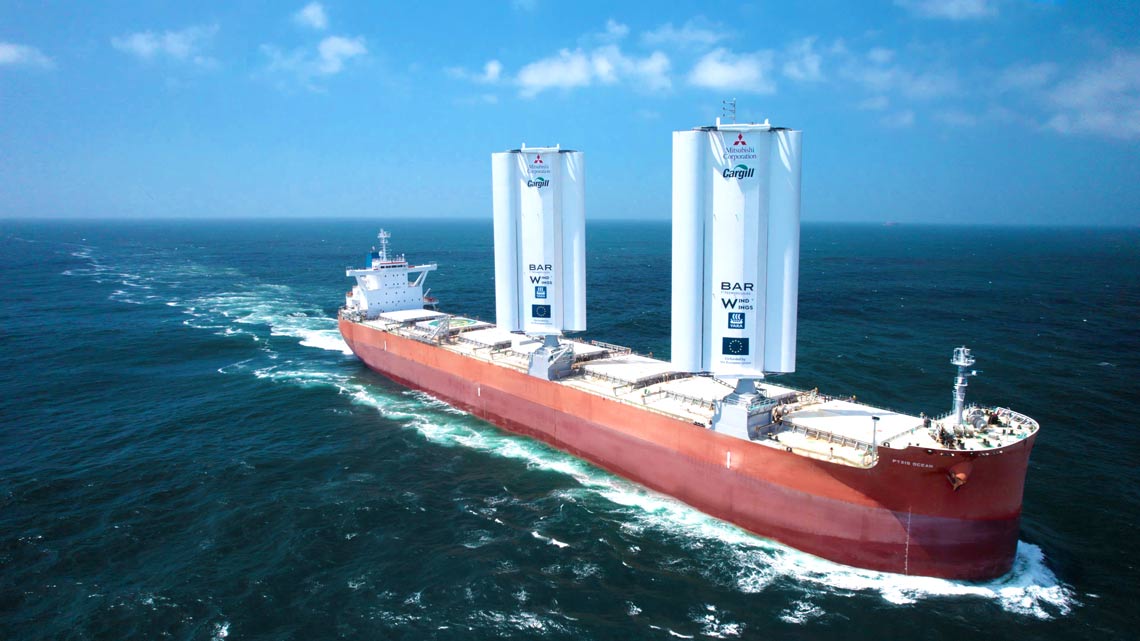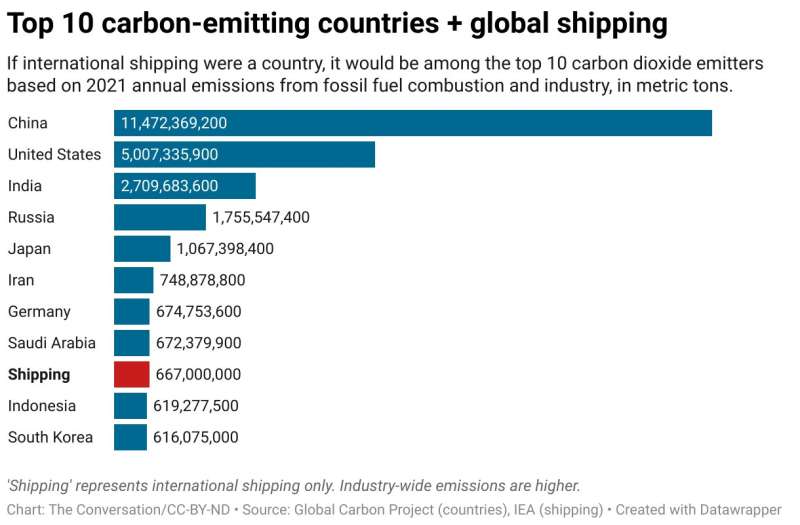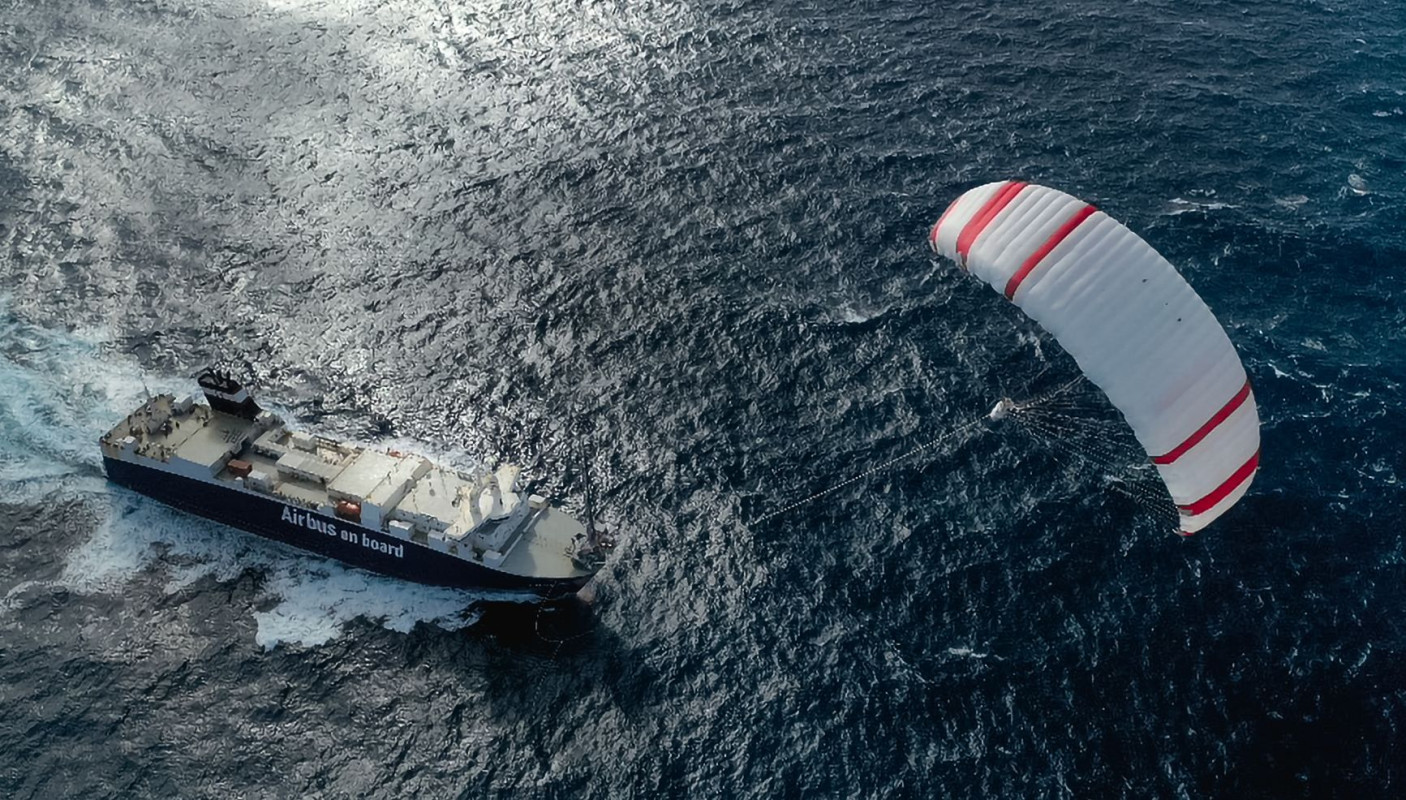 Did you know that every year, the shipping industry transports 11 billion tons of cargo or 90% of the world's traded goods?
Did you know that every year, the shipping industry transports 11 billion tons of cargo or 90% of the world's traded goods?
However, the industry also adds one billion metric tons of greenhouse gases to the atmosphere, comprising 3% of global emissions. This number is only rising as world trade increases -- and could increase by 50% if left unchecked.
To solve the issue, shipping companies such as Cargill and Airseas are leading the way in redesigning ships and slashing carbon emissions. Let's find out more!
Problems in the Shipping Industry
Cargo ships obtain their energy by burning heavy fuel oil and other fuels considered some of the dirtiest on Earth.
 Heavy fuel oil not only produces carbon emissions, but also releases other air pollutants like sulfur dioxide, nitrogen monoxide, and particulate matter.
Heavy fuel oil not only produces carbon emissions, but also releases other air pollutants like sulfur dioxide, nitrogen monoxide, and particulate matter.
These pollutants when exposed to UV rays can become toxic to humans and the environment. It is also very dangerous to transport and can cause serious damage if spilled.
However, lowering emissions is complicated in the shipping industry as there are many stakeholders involved who have competing interests. One way to force change is to force new regulations which is exactly what the European Union (EU) is doing.
The EU will be requiring shippers to pay for their carbon emissions starting next year, while the IMO will be grading each ship based on the amount of CO2 it releases per nautical mile.
The goal of the shipping industry is to reduce emissions by 50% by 2050. Meanwhile, companies like Cargill and Airseas are developing different designs to help.
Using Wind Power!
One solution being proposed is attaching giant microfiber glass wings to ships. These wings capture the high winds that are typical in mid-oceans and can fold down when not in use. The wings are equipped with computerized sensors that adjust the flaps according to the wind’s speed and direction.
 Chargill’s winged boat, the Pyxis Ocean, began its first wind-assisted voyage in August from China to Brazil. Each 125-ton wing sail can cut fuel usage by 1.5 tons per day, which translates to 4.65 fewer tons of carbon emissions and decreases fuel usage by 30%.
Chargill’s winged boat, the Pyxis Ocean, began its first wind-assisted voyage in August from China to Brazil. Each 125-ton wing sail can cut fuel usage by 1.5 tons per day, which translates to 4.65 fewer tons of carbon emissions and decreases fuel usage by 30%.
Another approach implemented by Airseas is a giant kite that is capable of pulling the cargo ship. Airseas’ giant kite reaches nearly 1,000 feet into the sky to harness stronger winds. When not in use, it is folded in a storage tank on the ship’s bow. Initial results show that the design could slash fuel consumption by 40% on some routes.
Though these designs still require backup fuel, they are a huge step forward in the right direction and a great start to reducing fossil fuel reliance in the shipping industry. Using wind propulsion, new fuels, and reduced speeds, it is estimated that 47% of shipping emissions could be cut by 2030.
Sources: NPR, NYT, Forbes






